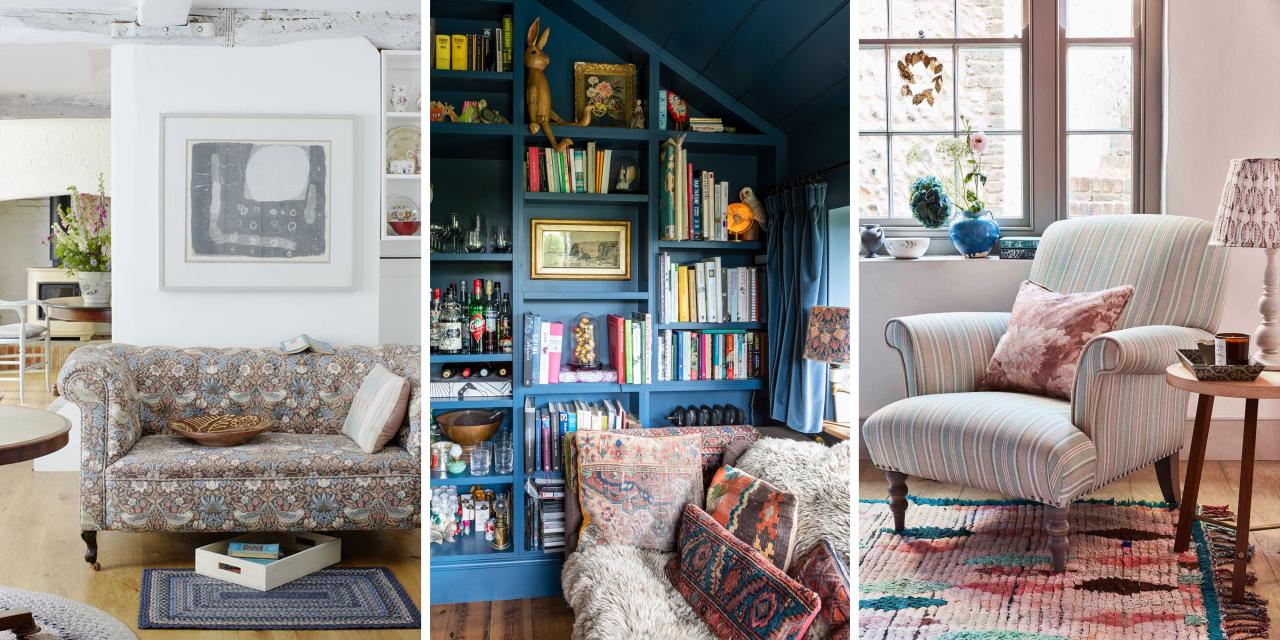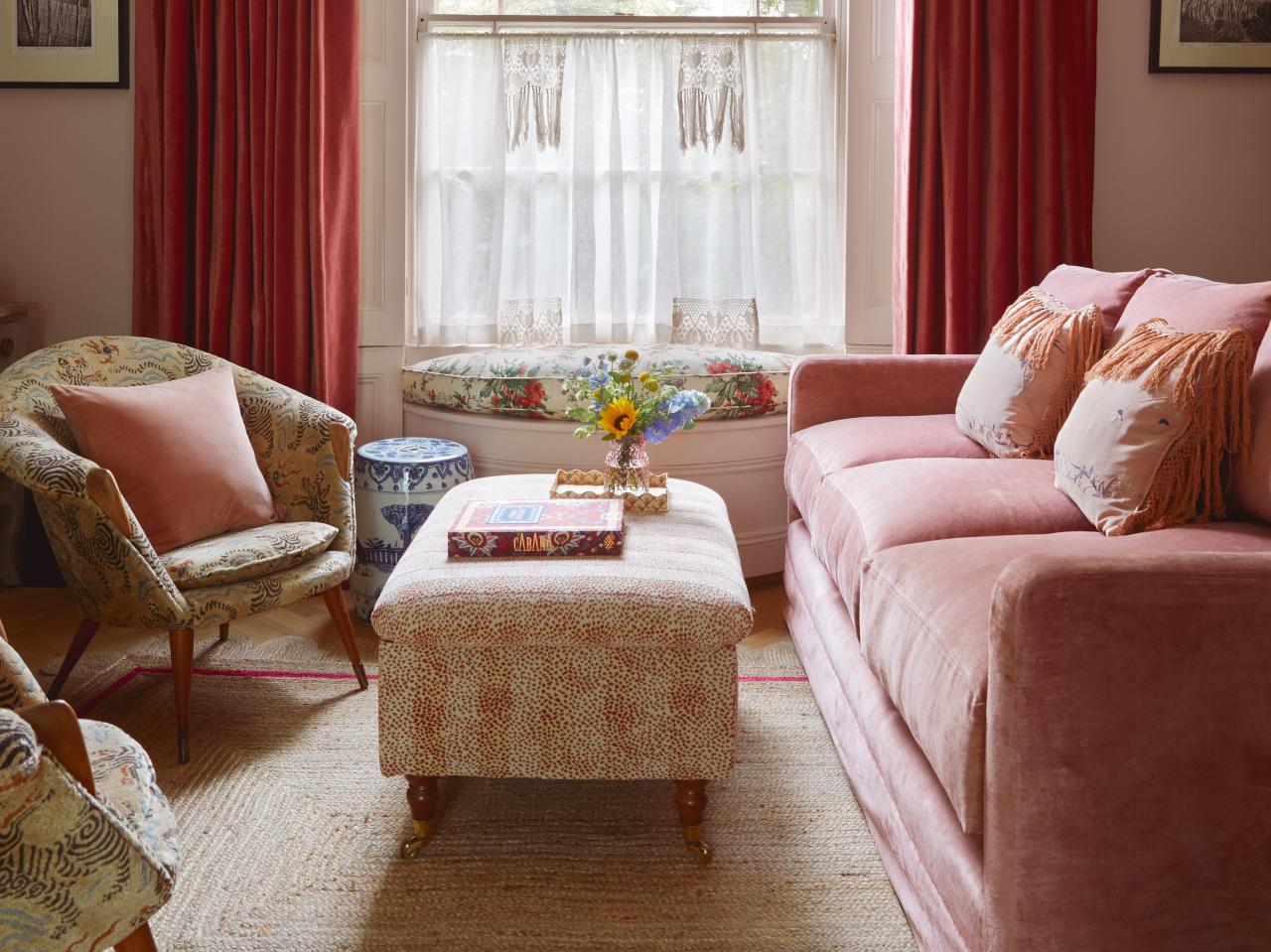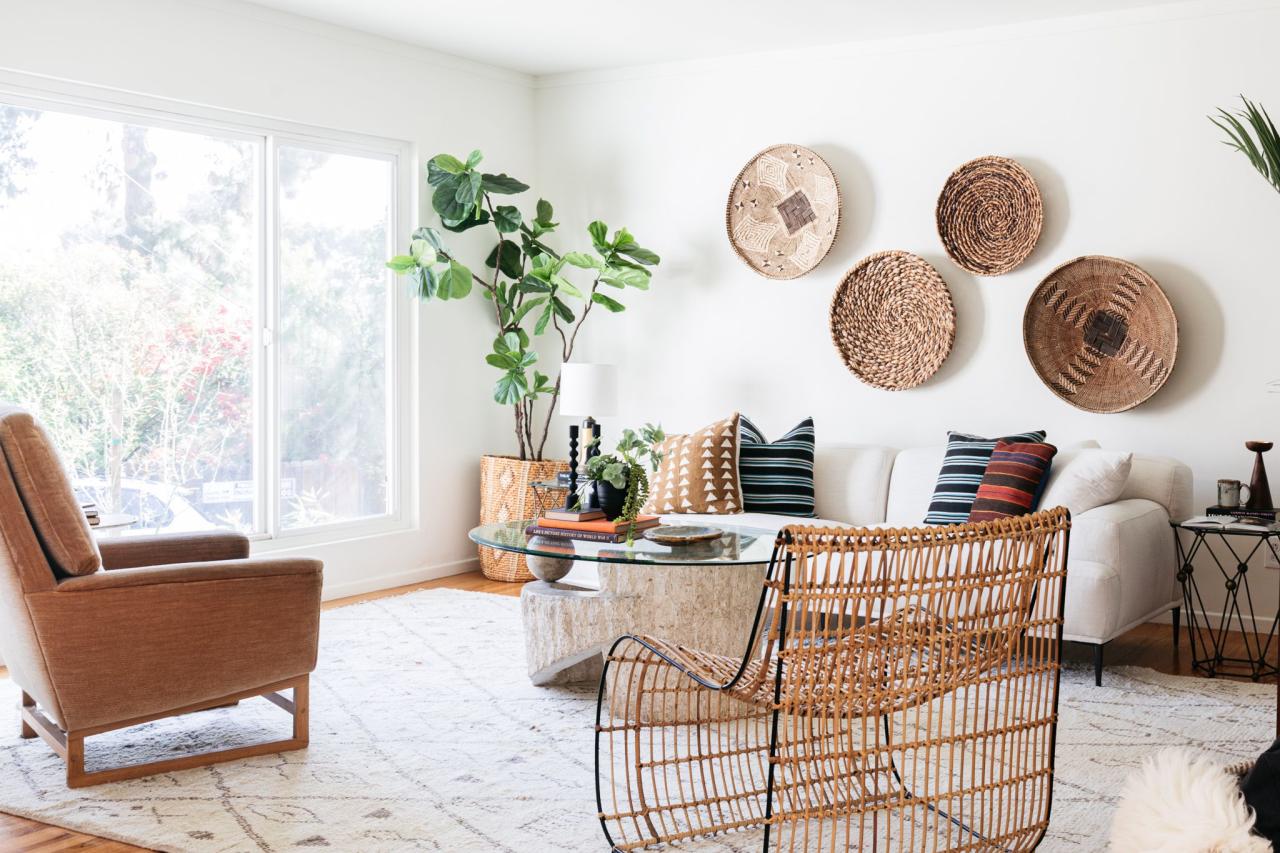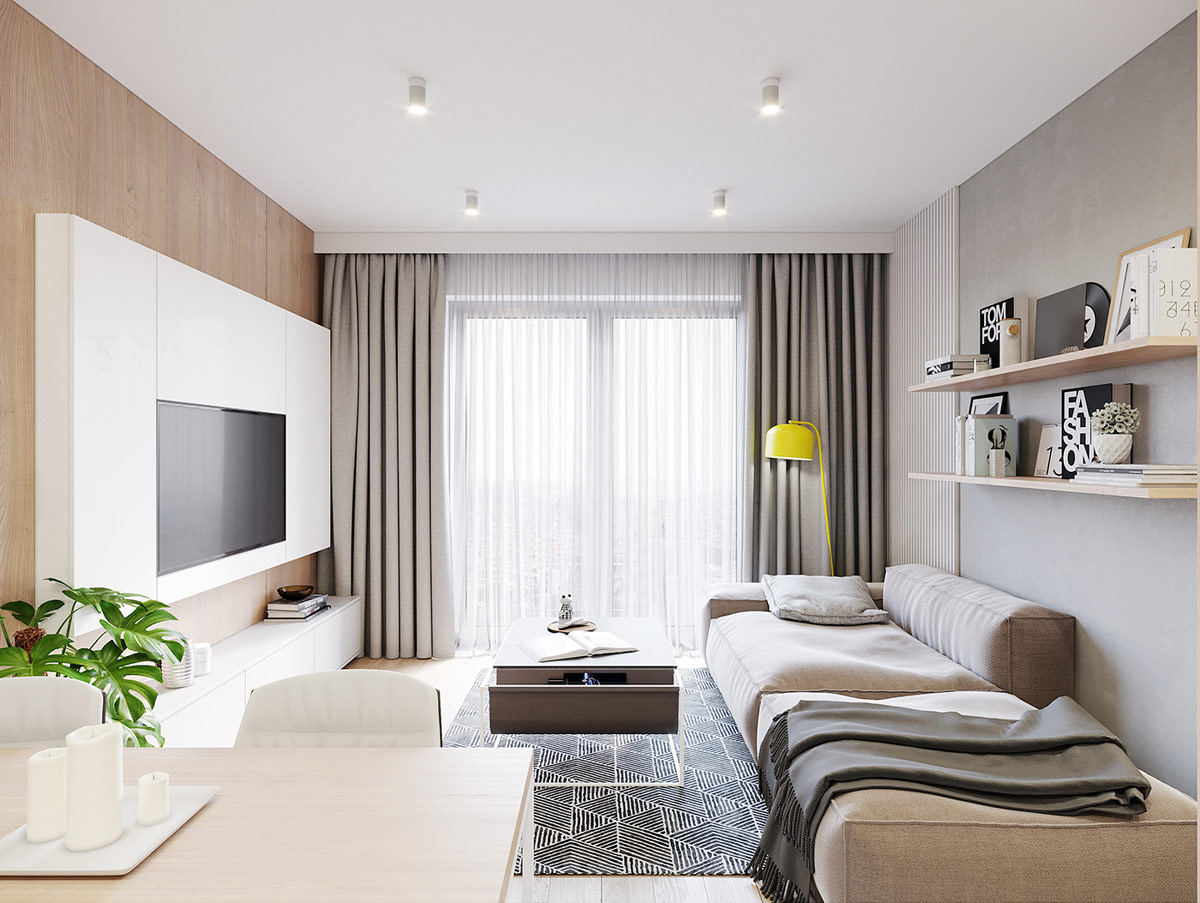Small living room ideas? Don’t let limited square footage cramp your style! This isn’t about compromise; it’s about clever design and maximizing every inch. We’re diving deep into transforming your cozy space into a functional and stylish haven, proving that big impact doesn’t require a big room. Get ready for a whirlwind of space-saving furniture, clever color palettes, and ingenious storage solutions that will leave you amazed.
From strategically placed mirrors creating the illusion of more space to multifunctional furniture that does double duty, we’ll uncover secrets to making your small living room feel surprisingly spacious and inviting. We’ll explore the power of light, the magic of color, and the art of accessorizing without overwhelming the area. Prepare to be inspired and ready to revamp your living room, no matter how small!
Maximizing Space in Small Living Rooms

Small living rooms don’t have to feel cramped. With clever design and the right furniture choices, you can create a functional and stylish space that maximizes comfort and minimizes clutter. The key is to prioritize multi-functional furniture and strategic placement to create a sense of openness and flow.
A Space-Maximizing Living Room Layout
Imagine a small living room, approximately 10ft x 12ft. To optimize seating and movement, consider a L-shaped sofa positioned along two adjacent walls. This creates a cozy seating area without dominating the room. A small, round coffee table positioned in the center allows for easy access from all seating areas. A slim console table placed against the remaining wall can provide additional surface area for lamps, books, or decorative items.
Maximizing space in a small living room requires clever design choices. The overall aesthetic, however, can still reflect a sense of grandeur, much like the stunning luxury home exterior design with natural materials we often see in high-end properties. Think about mirroring that natural, calming vibe indoors with earthy tones and minimalist furniture to create a spacious and sophisticated small living room.
This layout ensures ample space for movement while maximizing seating capacity. The furniture itself should be chosen for its size and functionality; avoiding bulky pieces.
Space-Saving Furniture Options
Several furniture options are specifically designed for smaller spaces. A sofa bed, for example, provides both seating and sleeping accommodation, ideal for guests or multi-purpose rooms. Consider a storage ottoman; this piece functions as both seating and storage, concealing blankets, pillows, or games. Wall-mounted shelving units maximize vertical space, minimizing floor clutter and providing display space. These units come in various styles and materials, easily adaptable to any decor.
Finally, nesting tables, which can be tucked away when not in use, provide flexible surface area without taking up excessive space. These options offer both practicality and aesthetic appeal.
Utilizing Mirrors to Expand Space
Mirrors are a fantastic tool for creating the illusion of more space. A large mirror placed on a wall opposite a window will reflect natural light, making the room feel brighter and larger. Positioning a mirror above a console table or fireplace mantel will visually expand the wall, drawing the eye and adding depth. However, avoid placing mirrors directly opposite each other, as this can create a dizzying effect.
Instead, strategically placing mirrors to reflect light and key features of the room will enhance the sense of spaciousness. For instance, a mirror reflecting a well-lit artwork or a window with a pleasant view will dramatically improve the perception of space.
Color and Light in Small Living Rooms
Creating a sense of spaciousness in a small living room hinges on clever use of color and light. The right palette and lighting plan can dramatically alter the perception of size, making a compact space feel airy and inviting rather than cramped and cluttered. We’ll explore how strategic color choices and well-placed lighting can transform your small living room.
Maximizing space in a small living room requires clever design choices. One often-overlooked element is window treatments; the right curtains can dramatically alter the feel of a room. Choosing the perfect curtains can be easier than you think, check out these amazing options at curtains for living room to find the perfect fit for your space. Remember, light and airy curtains can make a small living room feel more open and spacious.
A Spacious Color Palette for Small Living Rooms
A light and airy color scheme is crucial for maximizing the feeling of space in a small living room. Dark colors absorb light, making a room feel smaller, while lighter shades reflect light, creating an illusion of more space. Consider a palette centered around soft whites, gentle grays, or muted pastels. For example, a base of creamy white on the walls can be complemented by light gray furniture and pale blue accent pillows.
This combination offers a calming and spacious feel. Adding pops of a brighter color, such as a sunny yellow or a vibrant teal, as accents in smaller doses, can add personality without overwhelming the space. The key is to maintain a balanced lightness throughout the room, avoiding any heavy or dark hues that could visually shrink the space.
The Impact of Lighting on the Perception of Space
Lighting plays a pivotal role in shaping the perception of a small living room. Natural light is invaluable; maximize it by keeping windows unobstructed. Sheer curtains allow light to filter through while maintaining privacy. Artificial lighting should complement natural light, providing both ambient and task lighting. Poor lighting can make a small space feel dark and cramped, while well-planned lighting can brighten and expand the feel of the room.
For example, a single, centrally located overhead light can create harsh shadows and make the room feel smaller. In contrast, layered lighting, using a combination of sources, creates a more spacious and welcoming ambiance.
A Lighting Plan for a Small Living Room
A layered lighting approach is ideal for a small living room. This involves combining different types of lighting to achieve both brightness and ambiance. Firstly, ambient lighting provides overall illumination. Recessed lighting in the ceiling is an excellent choice, offering even distribution of light without taking up valuable floor or wall space. Secondly, task lighting focuses light on specific areas, such as reading corners or workspaces.
A stylish floor lamp or a strategically placed table lamp can provide this focused light without cluttering the room. Finally, accent lighting highlights architectural features or artwork, adding visual interest and depth. Consider using small, strategically placed spotlights to showcase a piece of art or a textured wall. This combination of ambient, task, and accent lighting creates a dynamic and inviting atmosphere, making the small living room feel much larger and more comfortable.
Furniture Selection for Small Living Rooms

Choosing the right furniture is crucial for maximizing space and comfort in a small living room. The key is to select pieces that are both stylish and functional, serving multiple purposes to avoid clutter and maintain a sense of spaciousness. Multifunctional furniture is your best friend in this endeavor.
Multifunctional Furniture for Small Living Rooms
The following table showcases examples of multifunctional furniture perfect for small living spaces, highlighting their versatility and space-saving capabilities.
| Furniture Piece | Function 1 | Function 2 | Function 3 (if applicable) |
|---|---|---|---|
| Sofa Bed | Comfortable seating for daily use | Extra sleeping space for guests | Additional storage (some models offer under-seat storage) |
| Storage Ottoman | Footrest or extra seating | Storage for blankets, pillows, or games | Coffee table substitute (when a tray is placed on top) |
| Lift-Top Coffee Table | Coffee table for drinks and snacks | Dining table for casual meals or working | Extra surface area for games or hobbies |
| Wall-Mounted Shelves | Display space for books and decorative items | Storage for media equipment or other essentials | Space-saving alternative to bulky bookshelves |
Sofa Styles and Sizes for Small Living Rooms
Selecting the right sofa is paramount in a small living room. Different styles and sizes offer varying advantages and disadvantages. A loveseat, for example, offers compact seating for two, ideal for smaller spaces, but lacks the seating capacity of a larger sofa. Conversely, a larger sofa might overwhelm a small room, making it feel cramped. A smaller sofa with a chaise lounge can provide extra seating and lounging space without taking up excessive floor area.
Consider the trade-offs between seating capacity and the overall impact on the room’s feel.
Benefits of Ottomans and Poufs in Small Living Rooms
Ottomans and poufs offer exceptional versatility and space-saving benefits in small living rooms. Their compact size allows them to fit into tight spaces, while their multi-functional nature adds significant value. They can serve as extra seating, footrests, coffee table substitutes (with a tray), or even storage solutions (if they have a lid). Their portability allows for easy rearrangement, adapting to various needs and configurations within the room.
The use of ottomans and poufs adds a touch of flexibility and style to a small living room without compromising valuable floor space. For example, a family might use an ottoman as extra seating during movie nights, then tuck it away during the day to maximize floor space for play.
Decor and Accessories for Small Living Rooms: Small Living Room Ideas

Transforming a small living room into a stylish and functional space requires careful consideration of decor and accessories. Overwhelming the room with too many items can make it feel cramped, while a sparse approach might leave it feeling cold and uninviting. The key is to curate a collection of items that enhance the space without sacrificing precious square footage.
A cohesive design scheme is crucial to achieving this balance.A cohesive decor scheme, incorporating a specific theme or style, is essential for creating a visually appealing and functional small living room. For example, a minimalist Scandinavian design, characterized by its clean lines, light color palettes, and natural materials, can work wonders. This style prioritizes functionality and simplicity, using light-colored walls and furniture to maximize the sense of space.
Natural wood accents, such as a light oak coffee table and shelving unit, introduce warmth and texture without cluttering the room. Simple, unfussy textiles in muted tones—think cream, grey, and pale blue—complete the look, creating a calm and airy atmosphere. The rationale behind this choice is that the minimalist approach inherently avoids visual clutter, a key consideration in a small space.
It prioritizes functionality and creates a sense of calm, making the room feel larger and more relaxing than it actually is.
Key Decorative Elements for Enhancing Space
Three key decorative elements can significantly impact the perceived size and ambiance of a small living room. These elements work together to create a sense of spaciousness and visual interest.First, strategically placed mirrors can visually expand the room. A large mirror positioned opposite a window will reflect natural light, making the room appear brighter and more expansive. Imagine a full-length mirror with a simple, elegant frame placed above a console table, reflecting both light and the room’s features, creating a sense of depth.
Secondly, vertical lines can draw the eye upward, creating an illusion of height. Tall, slender bookshelves reaching towards the ceiling, for instance, can achieve this effect. Instead of bulky, low furniture, consider a sleek, tall bookcase that displays a curated collection of books and decorative objects, leading the eye vertically and creating a sense of spaciousness. Thirdly, light-colored walls and furnishings are essential for creating a sense of openness.
Pale blues, soft greys, or creamy whites reflect light, making the room feel larger and airier. Imagine the walls painted in a soft, warm grey, complemented by a cream-colored sofa and light wood flooring. This palette creates a bright and inviting atmosphere, visually enlarging the space.
Small Decorative Accessories for Visual Interest, Small living room ideas
Adding small decorative accessories can infuse personality and visual interest into a small living room without overwhelming the space. The trick is to choose items thoughtfully and strategically.
- A small, sculptural piece on the mantelpiece or coffee table.
- A few carefully chosen framed prints or photographs.
- A stylish throw blanket or cushion in a complementary color.
- A single, statement vase with a few dried flowers or branches.
- A collection of miniature succulents or other small plants.
- A decorative tray to organize and display small items on a coffee table.
- A small, elegant candle holder with scented candles.
Storage Solutions in Small Living Rooms

Making the most of a small living room requires clever storage solutions. Think vertical, think hidden, and think multi-functional. By strategically incorporating storage, you can maintain a clutter-free and stylish space, even with limited square footage. Let’s explore some effective methods to maximize your storage potential.
Vertical Storage Solutions
Utilizing vertical space is key in small living rooms. Imagine a tall, slender bookcase reaching almost to the ceiling. This isn’t just for books; it can hold baskets for blankets, decorative boxes for smaller items, and even stylish storage bins for games or media. Visualize this bookcase in a light wood finish, its shelves neatly organized with varying heights to accommodate different sized items.
Above the bookcase, you could install floating shelves to showcase decorative items while simultaneously providing extra storage space. These shelves could hold framed photos, small plants, or even a collection of unique trinkets, adding personality without overwhelming the room.
Hidden Storage Options
Hidden storage is a game-changer for small spaces. Picture an ottoman with a lift-up lid, revealing ample storage space inside. This ottoman could serve as extra seating while discreetly concealing blankets, pillows, or even board games. Similarly, coffee tables with drawers or shelves offer a practical solution for keeping remotes, magazines, and other everyday items organized and out of sight.
Imagine a sleek, modern coffee table with a lower shelf, perfect for storing books and magazines, while the drawers hold remotes and other smaller items. The clean lines of the table contribute to a minimalist aesthetic, while its functionality enhances the room’s practicality. Another excellent option is a storage bench placed near the entrance, perfect for storing shoes, coats, and other items that might otherwise clutter the floor.
Built-in Storage Solutions
Built-in storage offers a seamless and space-saving solution. Envision a custom-built shelving unit that extends along one wall, incorporating both open and closed shelving. The closed shelving, perhaps with sleek white doors, conceals clutter while the open shelving displays decorative items or books. This built-in unit could be designed to perfectly fit the dimensions of the room, maximizing every inch of available space.
The benefits are numerous: increased storage capacity, a clean and organized look, and a customized aesthetic that complements the room’s design. The cost of installation is a factor to consider, but the long-term benefits of increased storage and improved aesthetics often outweigh the initial investment.
Utilizing Baskets, Boxes, and Containers
Baskets, boxes, and other containers are inexpensive and versatile tools for organizing and concealing clutter. Think woven baskets placed on shelves to hold blankets or throws, adding a touch of texture and warmth to the room. Clear plastic storage boxes are ideal for storing items you want to keep accessible but hidden from view. These could be placed on higher shelves or inside a cupboard.
Labeling these boxes makes it easy to find what you need. Stylish decorative boxes can be used to conceal items on open shelving or coffee tables, adding a touch of elegance to the storage solution. Consider placing a collection of similarly styled boxes on a shelf to create a cohesive and visually appealing display. For example, a set of three woven baskets in varying sizes could be used to organize magazines, remotes, and other small items on a coffee table.